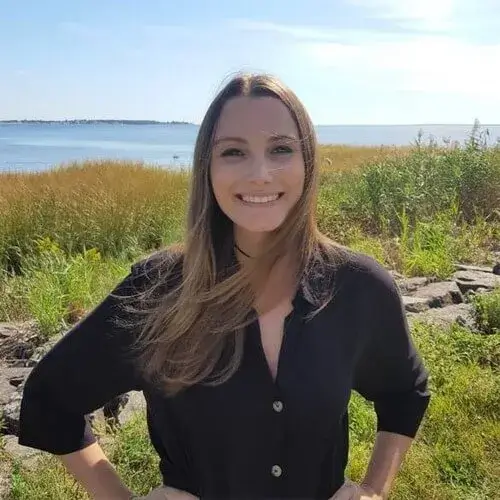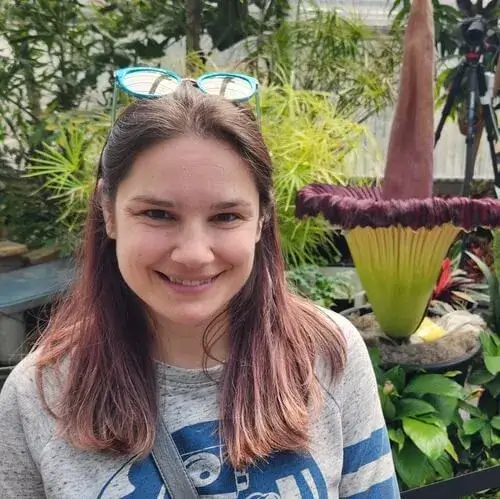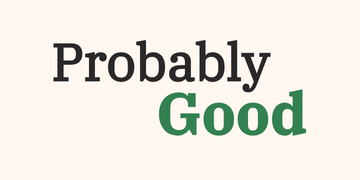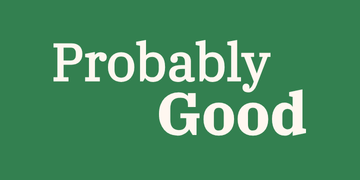Effective Altruism is a philosophy and social movement that uses evidence and reason to identify the most effective ways to help others. It comprises many members and associated organisations finding cost-effective ways to improve the world.
Some ways of helping are much better than others
Most of us want to help others and make the world a better place. We donate to charities, volunteer our time, choose careers we hope will benefit society, and make purchasing decisions based on their impact.
Effective altruism tries to answer the question: if you want to help others, how can you do this better?
As it turns out, some ways of helping lead to dramatically better outcomes than those we’d typically consider. The effective altruism movement works to identify what these are, using evidence and reasoning tools to find the most cost-effective ways to help others.
So far, the movement has had an impressive impact by promoting global health and wellbeing, mitigating deadly catastrophic risks, and helping animals at scale.
Prioritizing the best solutions
The most effective programs and interventions can do a truly huge amount of good. To illustrate this, suppose you had $5,000 to donate to a great cause. Here are just a few impressive things that money could achieve:
- Double the annual household income for five families through GiveDirectly, who provide direct cash transfers for people in extreme poverty.
- Fund a highly effective climate policy organization like the Clean Air Task Force, who have influenced the uptake of significant climate action by the US and members of the COP.
- Prevent 3,000 cases of lead poisoning in children through the Lead Exposure Elimination Project, which helps governments reduce the prevalence of toxic lead paint.
- Reduce the suffering of thousands of chickens (or even more) by funding advocacy into higher-welfare farming methods. A few include The Humane League, Mercy for Animals, and World Animal Protection.
These are impressive examples. But on the other side of the coin, many common altruistic efforts don’t help others nearly as much as the best ones. This means that our attempts to improve the world don’t always provide as many benefits as they could.
For instance, suppose you want to support a charity that helps people with vision impairments. It costs around $60,000 to train one guide dog to support a blind person. But it costs only $40 to fund blindness-preventing cataract surgery for an adult. You could cure over 1,000 people from blindness for the same cost as funding the training of one support dog.

The point here isn’t to disparage guide dogs. They provide real help to people who need it, and a donation to a guide dog charity is just as generous as any other. We highlight cataract surgeries just to show how much more good you can do if you search for the most cost-effective solutions.
This is just one example, but there are many others. For instance, the most effective programs in global health can often achieve 10x (and sometimes even 100x) as much good than the average program for the same money. Similarly, donating to highly effective climate charities does far more to reduce emissions than most eco-friendly purchasing decisions.
But the differences aren’t only between highly effective and ineffective attempts to do good. Some efforts are worse than just ineffective, actually causing harm to the people they’re trying to help. This can happen even if they sound like good ideas on paper. For example, programs like Scared Straight that aim to reduce crime may actually significantly increase crime instead.
Finding the most pressing causes
The differences in effectiveness aren’t just between solutions within the same cause—they’re also between entire cause areas.
Zooming out and really thinking about where you want to focus your efforts is one of the most important things you can do if you want to do more good for the world. To do this, people in effective altruism often use a reasoning tool which assesses causes via three key factors:
- Importance: How many people (or animals) are affected, and how deeply?
- Tractability: How easy is it to make progress on the problem with additional resources?
- Neglectedness: How many resources are already being devoted to this cause?
The most promising causes often score high on all three dimensions. Problems that are important, solvable, and neglected can pave the way to do an enormous amount of good.
This approach to prioritization has led to interesting insights about where our money and time can go the furthest. These are causes that most people don’t think all that much about, but can offer great opportunities for positive impact. A few problems that effective altruists often focus on include:
Almost 700 million people live in extreme poverty on incomes of less than $2.15 per day. Helping people in this kind of extreme poverty is often much easier than helping people on higher incomes–money and other help goes a lot further for people who have so little.
For example, it costs around $3,000 to prevent a child’s death from unsafe water in rural areas of Kenya, Malawi, and Uganda, but various interventions in high-income countries cost millions to save a life.
Over 100 billion animals are killed each year for food and other products. The vast majority of these live in factory farms, where they suffer greatly. But only a tiny percentage of animal-focused donations go towards helping these animals, meaning they’re highly neglected.
To put this in perspective, it can cost hundreds of dollars to rehome a dog, but giving this money to effective animal advocacy groups could save thousands of chickens from extreme suffering.
Pandemics could kill hundreds of millions of people and devastate the global economy. We’re all aware that pandemics can be (very) bad, but there’s reason to think that future pandemics could be worse than those we’ve seen before, and that the world isn’t doing enough to prevent them. Similar points can be made for other potential catastrophes, like nuclear war or risks posed by artificial intelligence.
Using your career to do good
The principles of effective altruism also apply to careers. Some career paths create vastly more positive impact than others, whether through direct work solving important problems or by earning money to donate to highly effective organizations.
In fact, your career is likely the best resource you have to improve the lives of others, if you want to use it that way. We’ve had the pleasure of interviewing professionals who have managed to steer their careers in impressively impactful ways.

Bal Dhital
Bal’s transition from clinical medicine to public health offers a fascinating look at how doctors can leverage their skills to tackle broader systemic issues within global health. Now working at the Lead Exposure Elimination Project, Bal’s story is inspiring for anyone considering a shift into a career that makes a large-scale impact.

Matti Wilks
After her undergraduate degree in psychology, Matti Wilks decided to pursue academia as a way to understand the psychology underpinning moral beliefs. Now a lecturer at the University of Edinburgh, Matti researches what prevents people from making better ethical decisions.

Jenna Riedi
After completing a humanities degree, Jenna knew she wanted to help animals. But, while working as a kennel manager, she realized she could help even more animals elsewhere. She now uses her skills as a communications manager, connecting animal activists with research to help them have a greater impact.
Where to start with effective altruism
Effective altruism has grown into a global community of people using their careers and donations to improve the world in cost-effective ways across many cause areas like global health, animal welfare, and various global catastrophic risks.
This means that there are ways to engage with the community wherever you’re based, and across many issues you likely care about.
To be clear, you don’t need to be part of any specific community to have a highly impactful, fulfilling career. Effective altruism also doesn’t have a monopoly on careful reasoning about doing good–many people outside of the movement are careful and rigorous in their attempts to improve the world.
But if you’re interested in meeting others with similar goals, effective altruism might be worth exploring. Here are a few ways to get involved.
Introductory Effective Altruism Program
In this free, 8-week online course, you’ll meet like-minded people and explore ways to have more impact with your careers and donations. These courses run every 8 weeks, so there’s likely one running soon.
Local EA groups
There are hundreds of locally-run effective altruism groups operating across many countries. To find a group near you, or an online group you can participate in from anywhere, you can use this list.
EA profession groups
You can also find groups for specific career paths and skillsets, like doctors, engineers, and civil service employees. We’ve collected a list of them here!
Our services
Here are some of the (free!) services we offer to help you find a career that’s both fulfilling and truly impactful.
- Job board. Our job board lists hundreds of open roles we think could be promising.
- Career guide. Our career guide is a great place to start if you want to carve out an impactful career.
- 1-1 advising. We offer personalized career advising calls to help guide you through key career decisions.
- Other content. We have loads of other resources for identifying and pursuing impactful career options.
- The Effective Altruism Newsletter – Provides regular updates on organizations and events within effective altruism
- What is effective altruism? – An intro from the Center for Effective Altruism
- What are the most important moral problems of our time? – A TED talk by Will MacAskill
- The 80,000 Hours Podcast – A podcast series interviewing people in high-impact careers
- Making a Difference I: Evidence-based Impact – A free online course on making an impact across several important cause areas
- Giving What we Can’s list of most effective charities
Related topics

